
We have 11 species of snakes at Killbear - half of these are Species At Risk. For the Massasauga Rattlesnake and Eastern Foxsnake, these wild shores of eastern Georgian Bay represent some of their last suitable habitat. Let's work together to protect these icons of the Bay.
Watch the Science of Saving the Massasauga Rattlesnake about conservation, protection and mitigation efforts in Killbear Provincial Park.
Killbear's 11 Species of SNakes
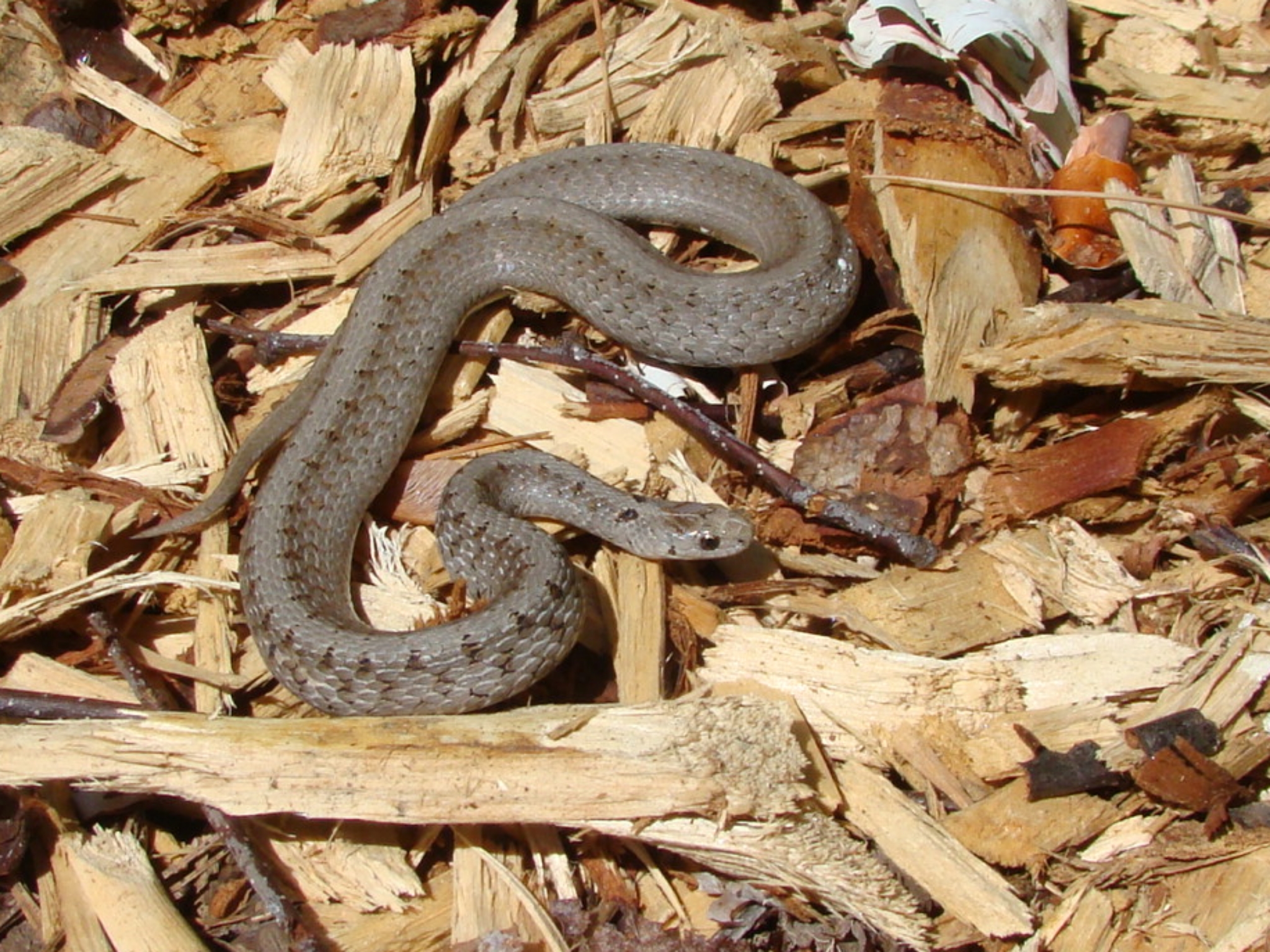
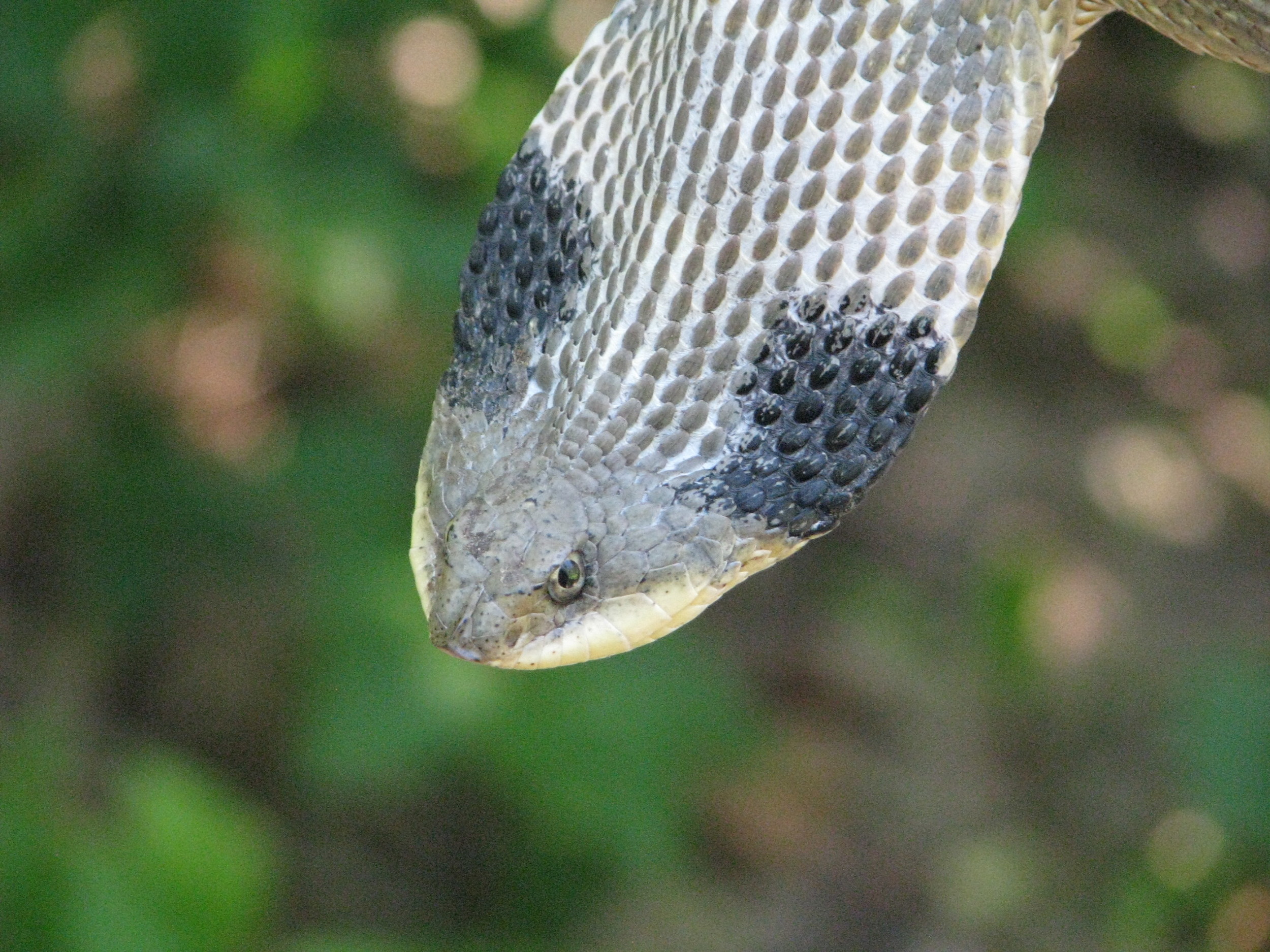

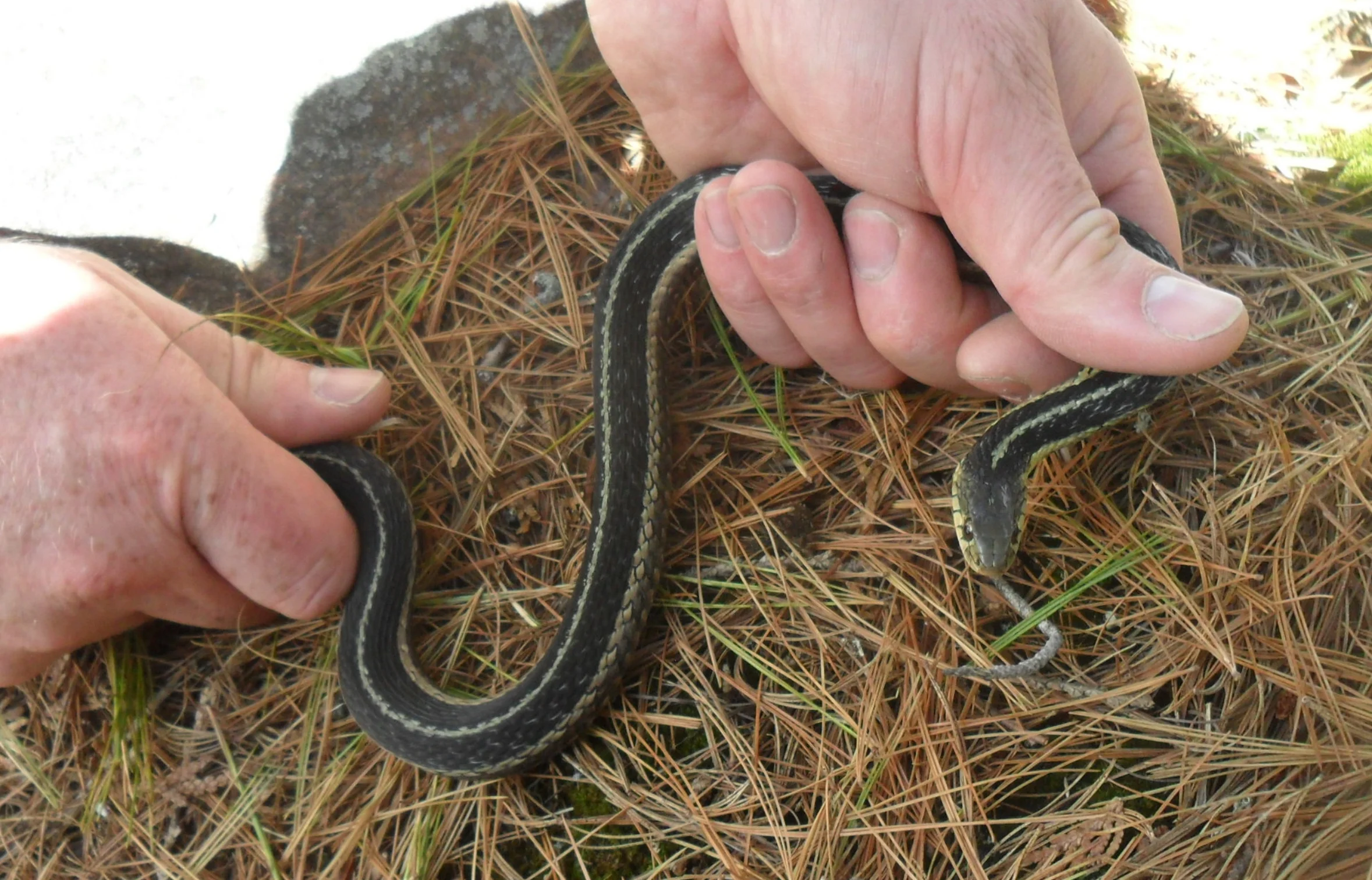
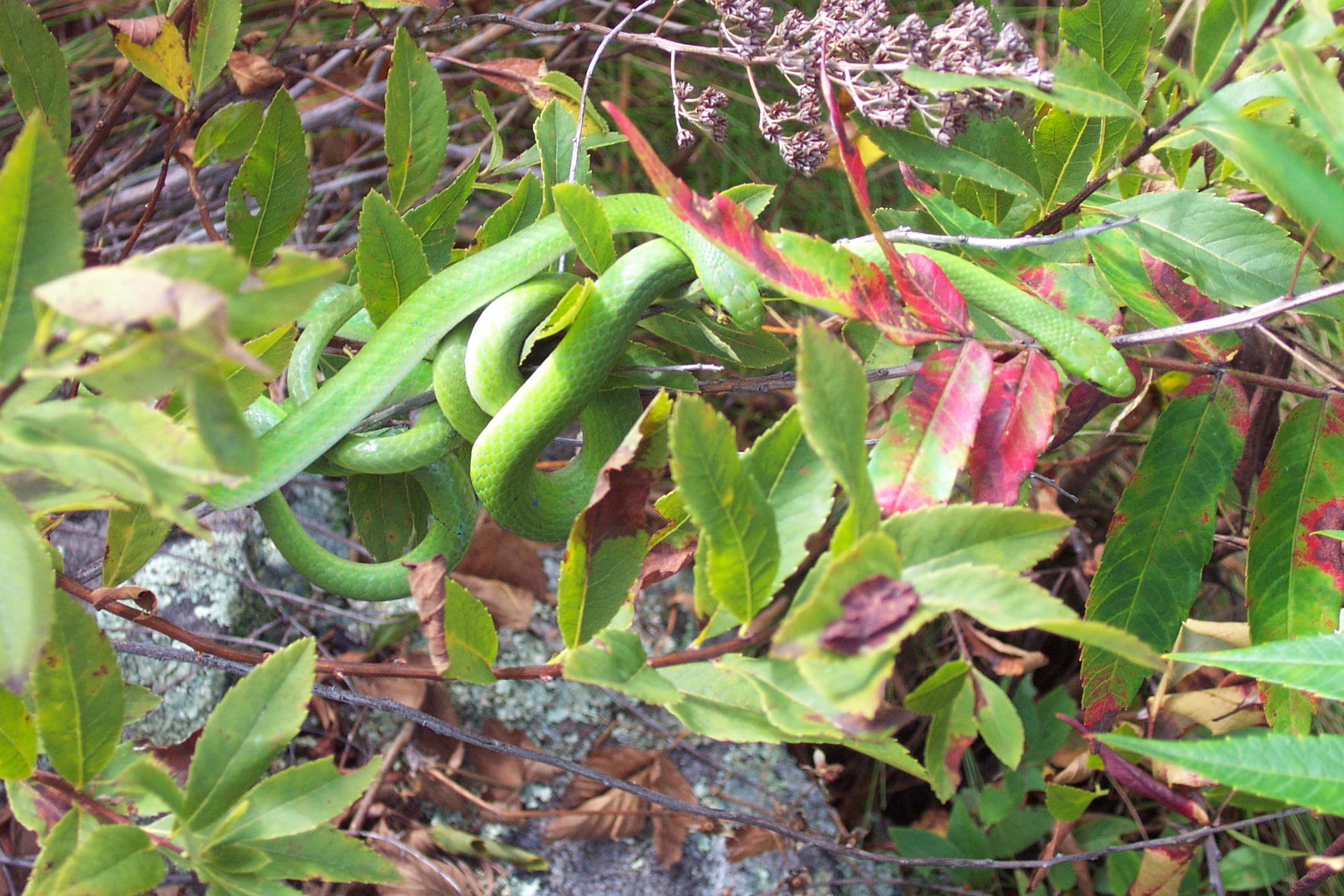
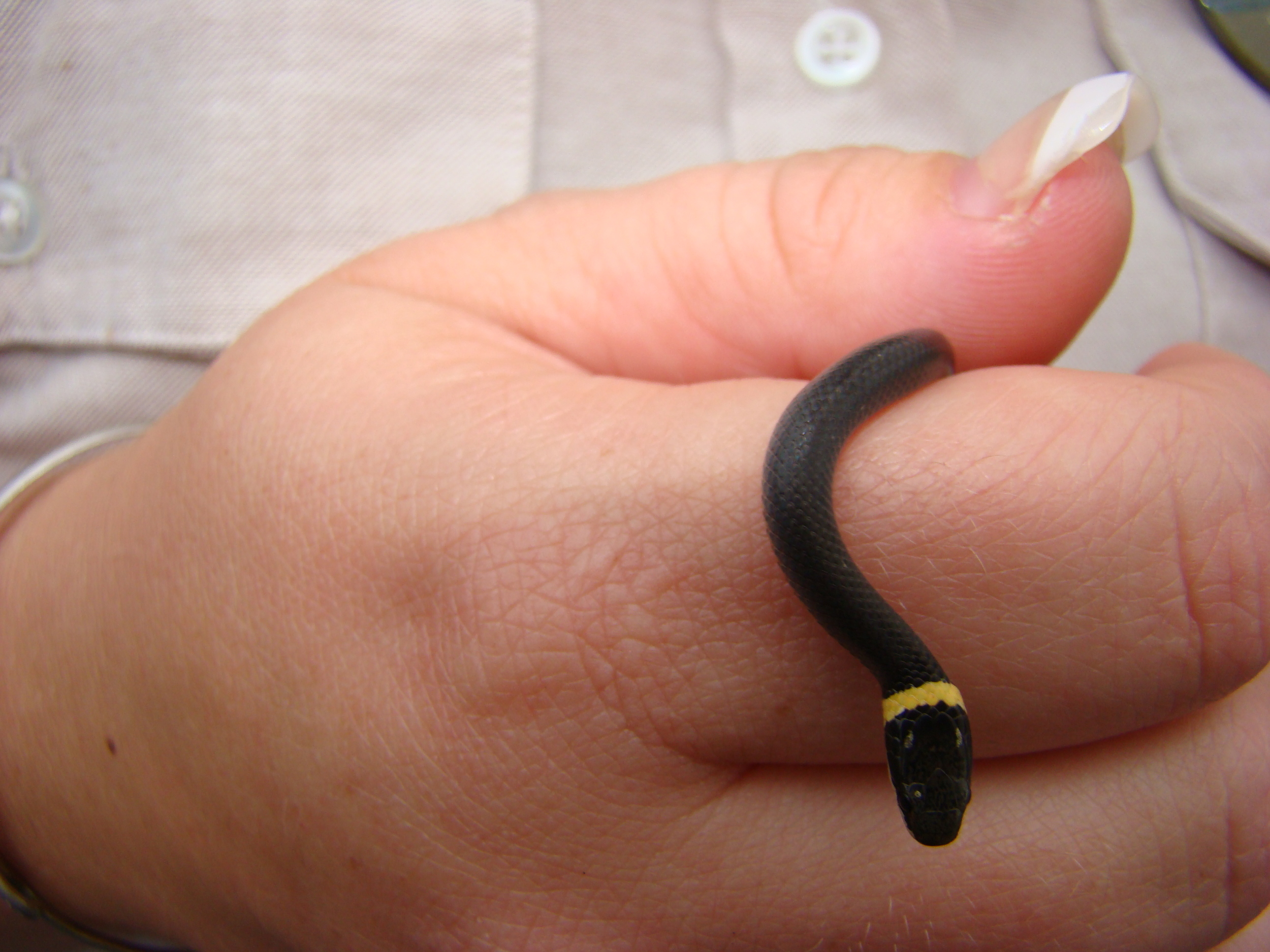
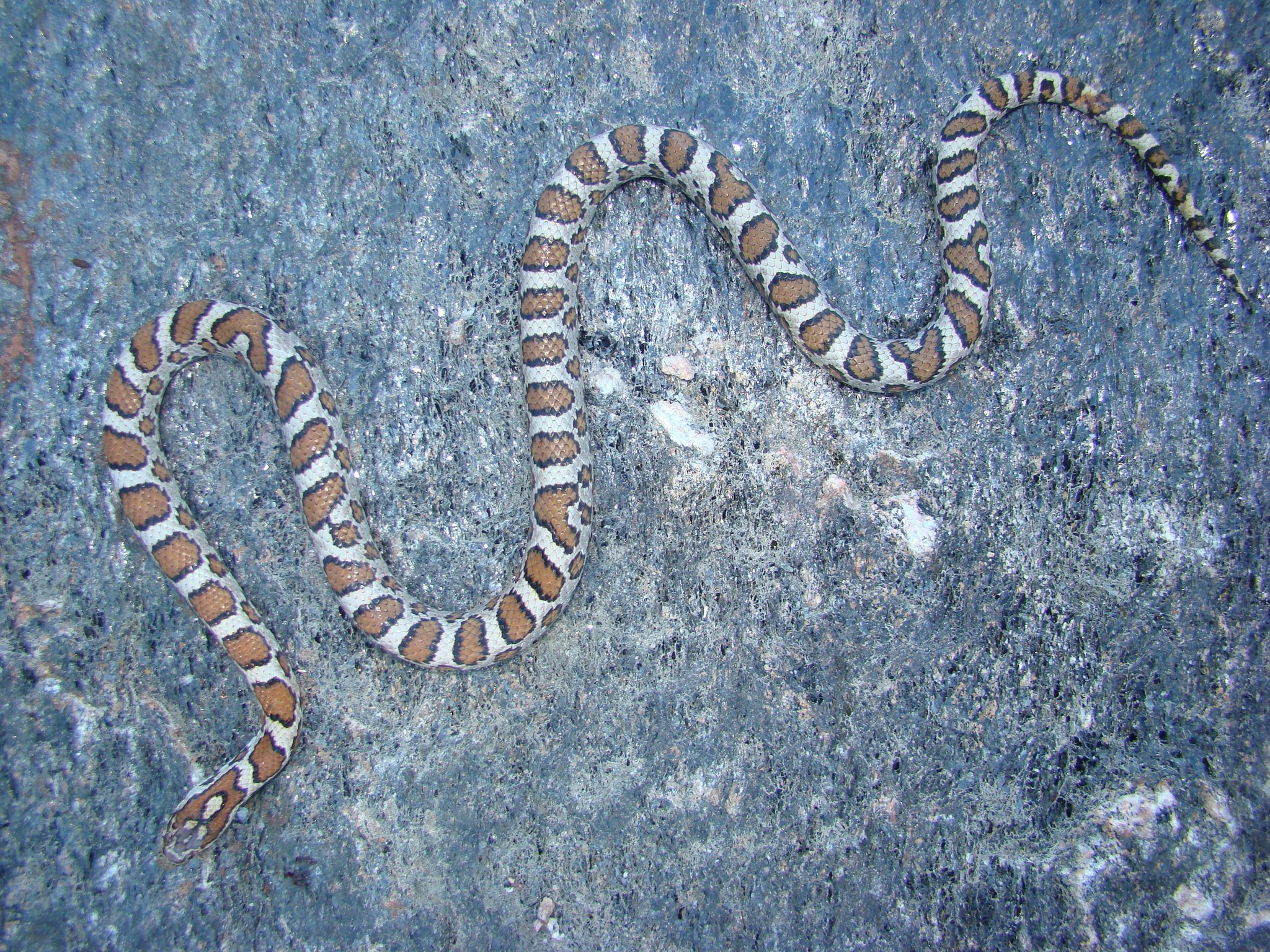
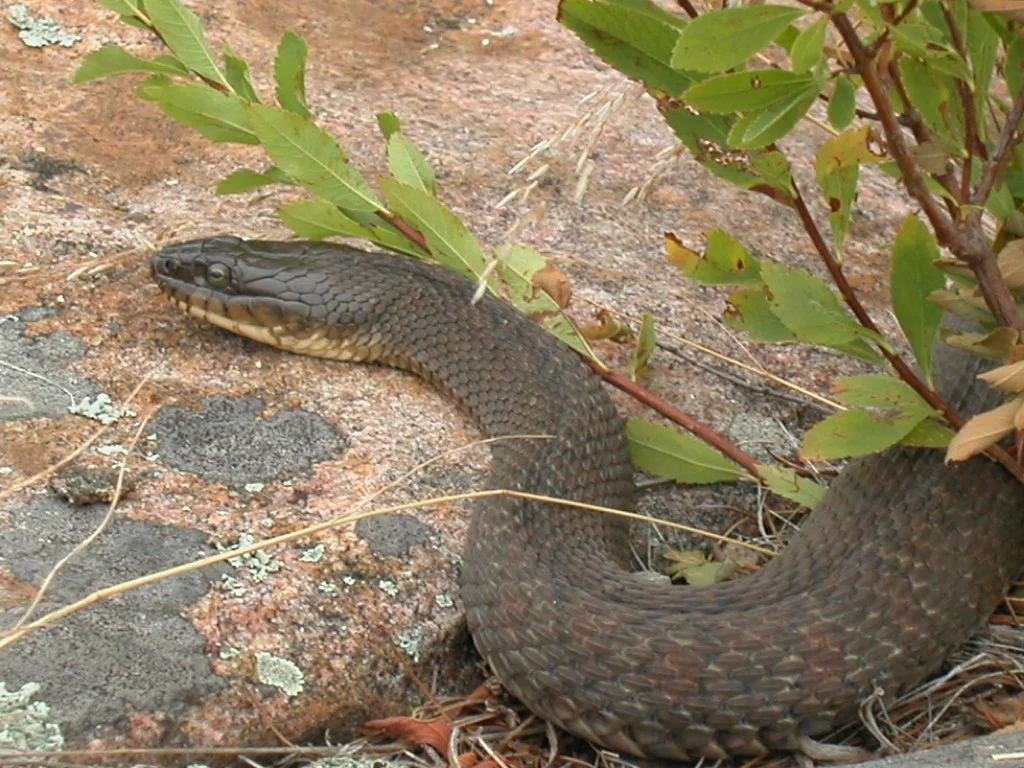

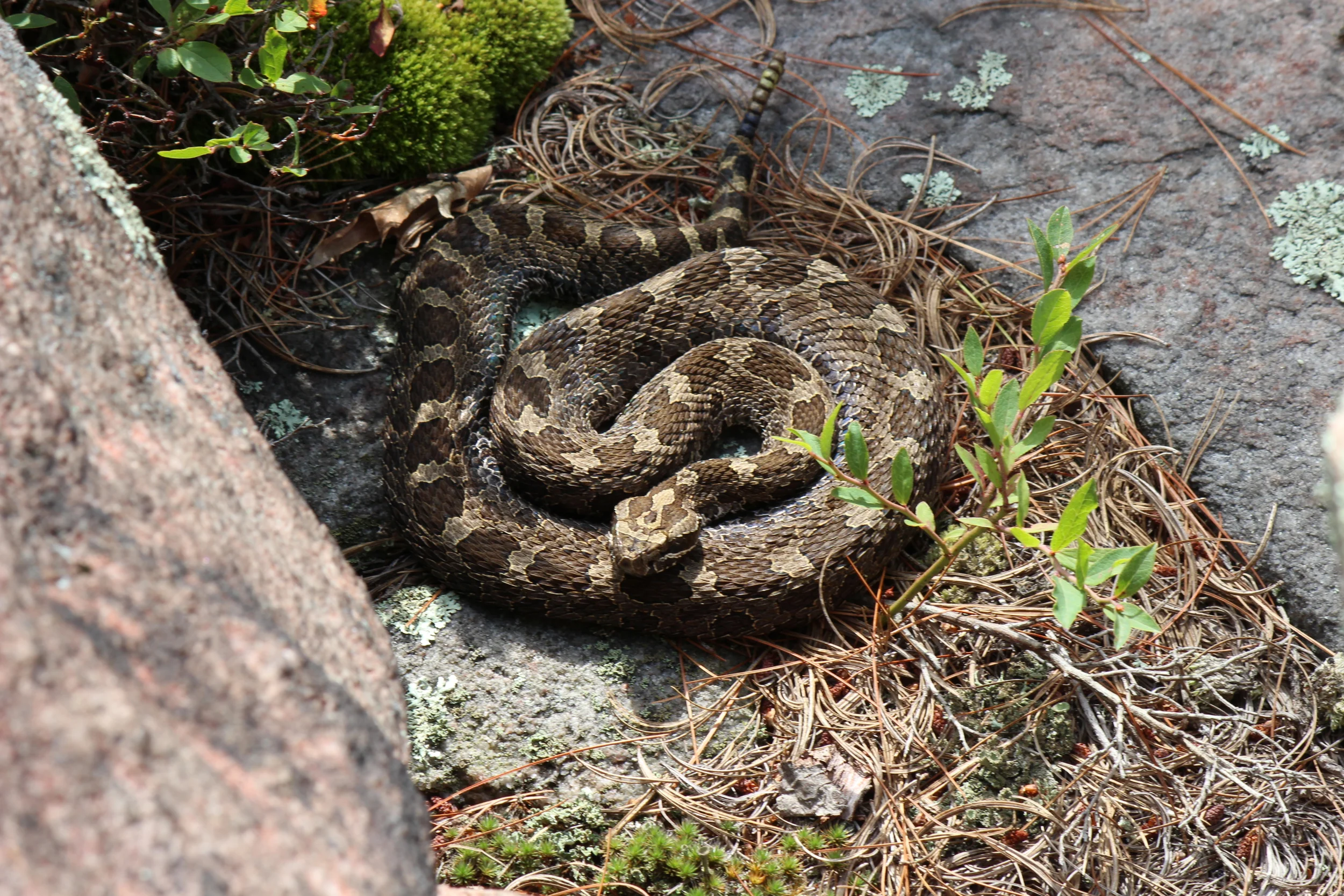
Massasauga Rattlesnake
The Massasauga rattlesnakes of Killbear Provincial Park are part of what makes this place special and unique. As Ontario’s only venomous snake, this snake deserves our respect. Listed as “threatened” by the Committee on the Status of Endangered Wildlife in Canada (COSEWIC), this shy, secretive and non-aggressive snake is rarely seen by park visitors.
Massasaugas are a thick-bodied snake that can grow to a maximum of around 3 feet in length. They can be recognized by their narrow neck in comparison with their wide body and head; their bow-tie shaped dark brown blotches along their backs; and the distinct rattle at the end of their tail. They have vertical, cat-like pupils and heat sensitive pits between the nostril and eye.
Massasaugas use Killbear’s varied landscape to meet their needs for food, shelter, and birthing sites. Rattlesnakes hunt for small rodents like shrews, mice and voles around Killbear’s wetland areas. They hibernate in sphaghum hummocks that fill with water with the rains of late fall, safely under the frost line.
Massasauga Rattlesnake Factsheet
Eastern Foxsnake
One of the largest snakes in this area, adult foxsnakes can reach lengths of 5 feet.They are identifiable by their yellow background colour with dark blotches down the back and sides and their copper-coloured heads. Foxsnakes are great swimmers, swimming with their whole bodies above the water - distinguishable from the Northern Watersnake which swims with only its head above. Foxsnakes can also climb trees and they eat warm blooded prey such as mice, chipmunks and small birds and their eggs.
Foxsnakes can only be found in a small area around the Great Lakes - on Georgian Bay and parts of Lake Erie and Lake Ontario. 70% of its range is in Ontario and the rest in Ohio and Michigan. Much of its range is heavily developed, which makes this area of eastern Georgian Bay with its relatively few roads and development very important to the Eastern Foxsnake. The Eastern Foxsnake is listed by COSSARO (Committee on the Status of Species at Risk in Ontario) as Threatened. The greatest threats to the Eastern Foxsnake are habitat loss - particularly loss of hibernation sites, road mortality and direct persecution.
If you see an Eastern Foxsnake:
- report the sighting immediately to park staff and have someone watch snake in case it moves. Eastern Foxsnakes are monitored by park staff which includes weight/measurements, sexing, and Personal Identification Tags.